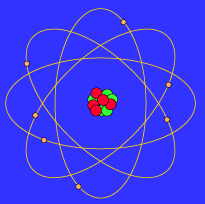Bleaching agents are compounds which are used to remove color from substances such as textiles. In earlier times textiles were bleached by exposure to the sun and air. Today most commercial bleaches are oxidizing agents, such as sodium hypochlorite (NaOCl) or hydrogen peroxide (H2O2) which are quite effective in "decolorizing" substances via oxidation. The action of these bleaches can be illustrated in the following simplified way:

Recall that an oxidizing agent is any substance which causes another substance to lose one or more electrons. The decolorizing action of bleaches is due in part to their ability to remove these electrons which are activated by visible light to produce the various colors. The hypochlorite ion (OCl-), found in many commercial preparations, is reduced to chloride ions and hydroxide ions forming a basic solution as it accepts electrons from the colored material as shown below.
OCl- + 2e- + HOH --------> Cl- + 2 OH-
Bleaches are often combined with "optical brighteners". These compounds are quite different from bleaches. They are capable of absorbing wavelengths of ultraviolet light invisible to the human eye, and converting these wavelengths to blue or blue-green light. The blue or blue-green light is then reflected by the substance making the fabric appear much "whiter and brighter" as more visible light is seen by the eye.



No comments:
Post a Comment